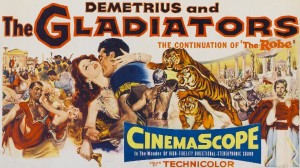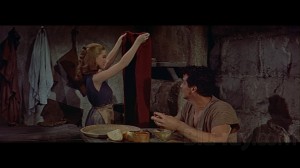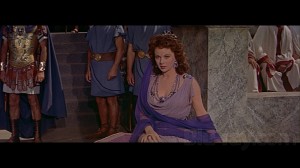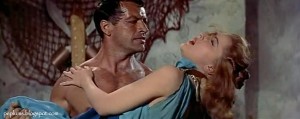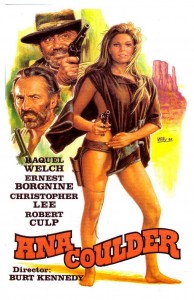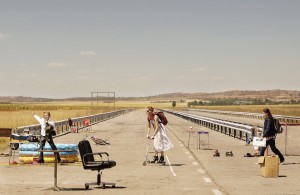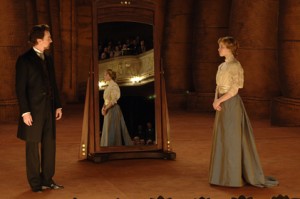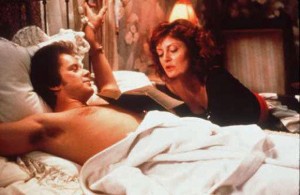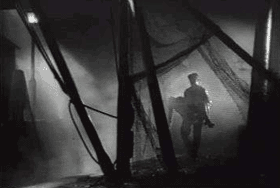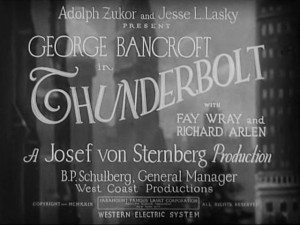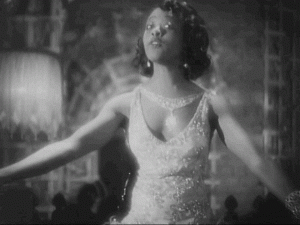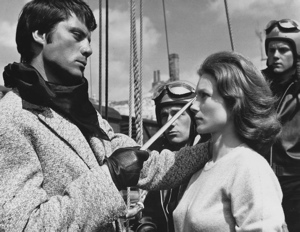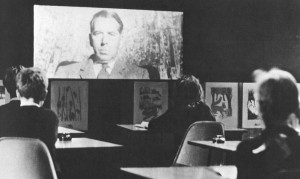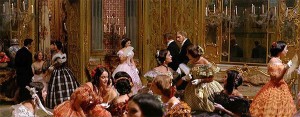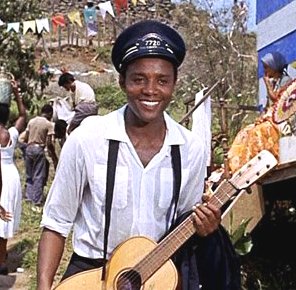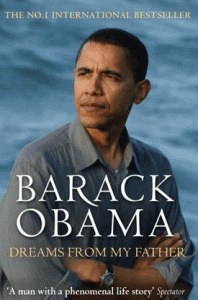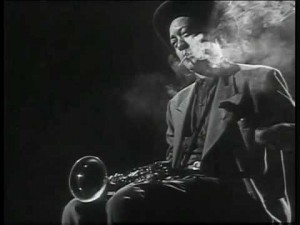My DVD column in Cinema Scope 44, Fall 2010. — J.R.
1. A confession
Since retiring from my job as a weekly reviewer in early 2008, I’ve been discovering that I usually prefer watching mediocre films of the past (chiefly from the 30s through the 70s) to watching mediocre films of the present — unlike some of my former readers, who irrationally conclude that I’ve stopped writing about movies because I no longer work for the studio airheads in implementing their latest ad campaigns. That is, I no longer train most of my attention on contemporary industry releases, as I was obliged to do for the preceding 20 years, because, in keeping with Raymond Durgnat’s apt observation that dated films sometimes have more to teach us than “timeless” classics, I’m looking for stuff I can chew on. (Try to imagine what literary criticism would be like if most or all of its practitioners decided that 2010 publications currently on sale at K-Mart comprised the bulk of all the literature ever published that was worthy of our close attention.)
This is why, for instance, I wound up picking up a copy of Delmer Daves and Philip Dunne’s sequel to The Robe, Demetrius and the Gladiators (1954), at a video store in Córdoba, Argentina in late July (although, as I later discovered, I could have picked it up on Amazon for roughly the same price): not because it’s any sort of masterpiece (though it’s probably a better movie than The Robe), but because I find it interesting from multiple vantage points, e.g., as one more example of Daves’ interracial utopianism (as also found in, say, Broken Arrow and Bird of Paradise a few years earlier), for the juxtaposition of Susan Hayward’s blood lust as Messalina with the virginal purity of Debra Paget as Lucia (mysteriously sustained even by her catatonia after Richard Egan tries to rape her), and for various rhyme effects between Michael Rennie’s Klaatu in The Day the Earth Stood Still and his Peter the Fisherman in both The Robe and Demetrius. All of which, I must confess, interests me a lot more than the mere possibility of seeing and contemplating Inception.
So I’m also sympathetic to the recent initiative of Olive Films to release in July a slate of fairly standard commercial releases, most of them from Paramount, made between 1950 and 1971 — Rudolph Mate’s Union Station (1950), William Dieterle’s Dark City (1950), Lewis Allen’s Appointment with Danger (1951), Andrew Marton’s Crack in the World (1965), and Burt Kennedy’s Hannie Caulder (1971) — even if this seems to play havoc with the motto emblazoned on Olive’s press releases, “where independent art matters”. Because when all is said and done, mediocre goods from the past when seen from today’s perspectives automatically take on a certain interest by telling us things we might not have already known about our own previous times and histories, whereas the assumed value of mediocrities of the present is predicated largely on the fact that they have far less to impart, either about ourselves or about our times, precisely because they’re so contemporary. In short, what’s apparently so attractive about being up-to-date is being able to fade into the woodwork and lose one’s identity rather than maintain a certain distance and detachment from both. Whereas the lessons of the past nearly always tell us something about the present. It’s interesting to learn, for instance, from the opening narration of Appointment with Danger, celebrating Americans’ absolute trust in the U.S. postal system circa 1951, that back then they routinely expected a dozen deliveries a week — not half as many, like today. (For that matter, when I lived in Paris in the early 70s, I used to get seventeen weekly deliveries, all of them quite prompt.)
In practice, I still haven’t seen all these films; in the case of the Marton SF feature, I couldn’t because for some strange reason my region-free player announced it couldn’t handle that disc’s regional coding. But I did discover that, even though a William Holden thriller theoretically sounds a lot more attractive than a Raquel Welch western, Union Station became a forgettable police procedural even while I was still watching it whereas Hannie Caulder, a more offbeat item that I’d never even heard of before, held my interest even while it was drowning in its own hyperbolic 70s zooms and out-of-phase acting (the good guys and the villains play in completely different styles, as if they belonged in separate movies).
Given my recent preoccupation with history, I should make another confession. When I first started sampling Flicker Alley’s handsome two-disc edition of Chicago (1927) — the original version of both William Wellman’s Roxie Hart (1942) and that horrific Oscar-winning musical of 2002 — I went almost immediately for The Golden Twenties, on the second disc, a breezy hour-long 1950 documentary produced by The March of Time that, through a kind of triangulation, has almost as much to say about 1950 as it does as the 20s. I haven’t yet seen The Flapper (1985), a half-hour documentary on more or less the same subject (on the same second disc), but the first ten minutes of Chicago — apparently as much a Cecil B. De Mille film as the original version of The Thing is a Howard Hawks movie, even though it’s signed by someone named Frank Urson — is delightful enough to whet my appetite for more.
One exception (among several others, I must admit) to my strictures against contemporary movies is Ursula Meier’s provocative Home (2008), now available from Swiss Lorber with some worthwhile extras (good interviews with Meier and her cinematographer, Agnès Godard; Meier’s 1999 short Sleepless). An eccentric but lovingly and happily close-knit family living in the country next to an unfinished superhighway — mother (Isabelle Huppert), father (Olivier Gourmet), older daughter (Adéläide Leroux), younger daughter (Madeleine Budd), and son (Kacey Mottet Klein) — are gradually driven nuts by the sound, pollution, and lack of privacy brought by passing vehicles once the superhighway opens, except for the older daughter, who manages to escape relatively early. Lots of questions are raised here, and fortunately not all of them are answered.
2. 7th annual DVD awards, Il Cinema Ritrovato, Bologna, July 2010; jurors, Lorenzo Codelli, Mark McElhatten, Paolo Mereghetti, Jonathan Rosenbaum, Peter Von Bagh:
Best DVD 2009 / 2010: By Brakhage: An Anthology, volumes one and two (Criterion).
Released in a stunning Blu-ray edition, this discerning selection of 56 films made by avant-garde visionary Stan Brakhage between 1954 and 2003 received painstaking transfers from preservations conducted by Mark Toscano at the Academy Film Archive. Our special award of distinction goes to this unprecedented project, which also includes documentation of Brakhage lectures and film salons and, in an accompanying book, concise essays and descriptions of the films.
Best special features (bonus) award goes to (a) three recent Ruscico releases of classic Russian films (two previously unavailable films by Lev Kuleshov, Engineer Prite’s Project [1918] and The Great Consoler [1933], and Sergey Eisenstein and Grigori Aleksandrov’s October [1927]) — both for their innovative handling of printed and illustrated commentaries by scholars and for their subtitles in many languages, despite the unfortunate fact that all three releases are identified on their covers only by their Russian titles and (b) the Filmmuseum with Filmmuseum München and Goethe Institut Deutschland release of G.W. Pabst’s Die Freudlose Gasse (The Joyless Street, 1925), for the three documentaries about Pabst that are included.
The best rediscovery of a forgotten film goes to three separate releases: (a) Kent Mackenzie’s The Exiles, a memorable 1961 docudrama about Native Americans in Los Angeles, issued by Milestone; (b) Marijka Nevernice, a rare gem of 30s Czech cinema, and the only film directed by the great writer Vladislav Vancura, issued by Filmexport Home Video; and (c) Hanns Walter Kornblum’s Wunder Schöpfung, issued by Filmmuseum with Filmmuseum München and Goethe Institut Deutschland, an unusual film about scientific experiments in the 20s.
Best DVD series/box set: Roberto Rossellini’s War Trilogy: Rome Open City/Paisan/ Germany Year Zero (1945-1946-1948), Criterion. Bringing together for the first time these three great films, in careful digital restorations, and with excellent and informative interviews, both new and archival.
Best Non-Fiction DVD (a new category): La Guerra Filmada (War on Film), released by the Filmoteca Española and including 37 documentaries and newsreels on the Spanish civil War made between 1936 and 1939, for its creative and comprehensive archival research.
Best critical research on a DVD (another new category): Germaine Dulac and Antonin Artaud’s La Coquille et le Clergyman, a bilingual French and English book and DVD released in France by Light Cone & Paris Expérimental.
Two final mentions: Isaac Eppels’ Irish Destiny (1926), released by the Irish Film Archive, specifically for the original music composed by Mícheál Ó Súilleabháin, and performed by the RTÉ Concert Orchestra under conductor Proinnsías Ó Duinn; and the Blu-ray presentation by Cinecittà Luce of La Rosa di Bagdad (Anton Gino Domeneghini, 1949), the first feature-length Italian animation in color.
3. Early and Late Works
Early Neil Burger & Ron Shelton: two double-threats from Fox (The Illusionist & Bull Durham, two movies I like). By double-threats, I mean not only writer-directors but also Fox’s new practice of packaging the Blu-Ray and the DVD of the same movie in the same tidy box, which the BFI is now also doing with its new Ozu releases. (See Mea Culpa, etc., below.) Trying to figure out practical reasons for why anyone might possibly need to have both versions, apart from some mindless form of collectible completist fetishism, I can only think of my own situation in early August — preparing to make a temporary move to Richmond, Virginia from Chicago to teach for two semesters in Virginia Commonwealth University, meaning that I’ll still have my Blu-Ray player in Chicago but will likely have to live without Blu-Rays in Richmond. Most of the extras that make these two packages especially well worth having, such as the audio commentaries of Burger and Shelton — allowing me to discover, for instance, from Shelton’s audio commentary about his first feature, that he’s a Southerner, like me and Stanley Donen (among others), who’s utterly lost his Southern accent — turn up only on the Standard Definition DVDs.
The rationale behind giving us two-disc box sets with the same movie on both disc also turns up in the new Russian film classics being issued by Ruscico (see above), which gives us all the commentaries on one disc and more subtitle choices for watching the film without the commentaries on the other. In both cases, it’s hard to shake off an impression of unnecessary waste that better technology could eliminate.
Early Kubrick: Fear and Desire. I wouldn’t imagine that Stanley Kubrick’s family are (or would be) very pleased about the release of his long-suppressed first feature (1963, 63 min.) on an Italian DVD — and in a mediocre, borderline-acceptable version to boot. But you should know that it’s out there, and that some independent sellers on Amazon are already hawking it. I must confess that, in spite (or maybe because) of its periodic mawkishness, I prefer it in some respects to Kubrick’s subsequent Killer’s Kiss (1955), both for its dreamy montage effects and its emotional vulnerability as a sort of juvenile first draft of Full Metal Jacket.
Early Pontecorvo. Finally catching up with Gillo Pontecorvo’s notorious Kapò (1959) — thanks to its release in Janus Films’ “Essential Art House” series (brokered, if not officially released, in a bare-bones edition by Criterion, complete with sketchy notes by “MK,” e.g. Michael Koresky, who similar signs his liner notes in Criterion’s Eclipse series) — I can finally attest that both Jacques Rivette’s damning review (see “On Abjection” at http://www.dvdbeaver.com/rivette/ok/abjection.html) and Serge Daney’s corroborating late essay (see www.sensesofcinema.com/2004/feature-articles/kapo_daney/) are fundamentally correct.
But this doesn’t mean that either Rivette, who saw this Oscar-nominated film, and Daney, who never did, necessarily said everything that needed saying about that abjectness of the camera movement involved. The hero of both texts in relation to the demonization of Pontecorvo is Alain Resnais, whose Nuit et brouillard (1955) and Hiroshima mon amour (1959, the same year as Kapò), both dealing with the same war, provide the essential cross-references, and it’s worth adding that Emmanuelle Riva’s role in both Kapò (where her character’s death by electrocution by running into a concentration camp fence) and Hiroshima undoubtedly helped to stoke this polemic. Another contributing factor that’s usually overlooked is that the death is immediately spurred by the heartless reproach to Riva’s character of the title teenage heroine (Susan Stasberg), a Jew in hiding who has abjectly agreed to work for the Nazis running the camp in return for a few favors, so that the scandal of Jewish cooperation, which would raise so many hackles when Hannah Arendt brought it up in Eichmann in Jerusalem a few years later, undoubtedly raised the stakes in the moral issues involved. So it’s a bit of an oversimplification, perhaps, to assume that Rivette’s rage at the camera movement is merely and exclusively a matter of Pontecorvo’s tasteless facility in relation to the subject of the Holocaust, even though this is obviously a major part of it. One could also object, for instance, to the rather contrived “happy” ending whereby Strasberg is able to redeem herself in a sacrificial death through her love for Laurent Terzieff — a rather cliché-ridden and no less Oscar-ready portrait of unassailable nobility. Which is only to say that the style certainly matters, but not in isolation from the script.
Late Powell: They’re a Weird Mob. It’s wonderful, of course, to have the lush new Criterion restorations of Michael Powell and Emeric Pressburger’s Black Narcissus (1947) and The Red Shoes (1948). But for me the big revelation of the quarter is Michael Powell’s first Australian film, which until recently was never more than a title for me, and an obscure one at that.
Pressburger wrote this film pseudonymously (as Richard Imrie — revising an earlier, uncredited script by Powell and John O’Grady, the author of the best-selling novel being adapted, hiding himself behind the name of his hero, Nino Culotta. The latter is played in the film by the fabulous and ambidextrous Walter Chiari only a year after he played Silence in Orson Welles’ Chimes at Midnight. A quirky working-class romantic comedy about an Italian sports journalist emigrating to Sydney with the promise of a job from a cousin that immediately evaporates, along with the cousin — and who immediately turns to construction work in order to survive — this manages to stay both light and unpredictable without ever seeming slight. Powell proves his versatility here not only by successfully showing Australia to Australians, but also by making the whole thing personal in his own terms. This is quite different from shepherding Helen Mirren through her first leading role opposite James Mason in his next Australian feature, three years later, the profoundly erotic Age of Consent, but in its own way it’s every bit as assured and persuasive, both as a portrait of Sydney and as a comedy about immigration.
I happened upon this delightful region 4 PAL DVD — which also includes a terrific hour-long black and white 60s Australian TV special about the film’s production and post-production — thanks to an Australian film archivist who handed me a copy in Bologna, but you can actually order it on American Amazon. And for further edification, I strongly recommend Graeme Harper’s essay about the film in Ian Christie and Andrew Moor’s 2005 anthology, The Cinema of Michael Powell; unless or until a treatment of this film by the late Raymond Durgnat should emerge from his unfinished and unpublished magnum opus on Powell, this is as good as anything we’re likely to get on the subject.
Early Guitry: Presenting Sacha Guitry (Eclipse Series 22), which includes The Story of a Cheat (1936), The Pearls of the Crown (1937), Désiré (1937), and Quadrille (1938). In one of his best New York Times DVD columns, Dave Kehr lamented the fact that Guitry still needs to be introduced to Yankee audiences, and I must confess that after reseeing the first of these features, sampling the second, and getting my first taste of the third, I can see what he means. Yet the fact remains that Guitry seems remote to many Americans, not merely because he’s more French in some respects than Duvivier or Renoir (and every bit as French as late Resnais, to cite his nearest contemporary counterpart), but also because his form of boulevard wit now seems somewhat old-fashioned even in France. (Put his dialogue next to Eric Rohmer’s and you’ll see what I mean.) Nevertheless, the first two films in this package remain innovative and fresh in a way that seems imperishable.
Early (and late) Sternberg: 3 Silent Classics by Josef von Sternberg. A beautiful box set from Criterion, but I hope I can be excused for recording a few demurrals in spite of the riches available here. In addition to Underworld (1927), The Last Command (1928), and The Docks of New York (1928), the main bonuses here — apart from a 98-page booklet that includes Ben Hecht’s “original story” for Underworld and several essays — are excellent audiovisual essays by Janet Bergstrom and Tag Gallagher, respectively, on the first two discs, and an extended 1968 interview with Sternberg for Swedish television on the third. (Bergstrom’s essay is more historical in orientation, Gallagher’s closer to formal analysis, but both draw effectively on both registers.)
My principal complaint is that Sternberg’s first sound picture, the superb Thunderbolt (1929), should have been included in this package — not only because it’s a spinoff of Underworld, with the same star playing a similar role (George Bancroft, who also stars in the now-lost The Dragnet [1929] as well as Docks of New York), but also because the odds now of Criterion issuing this feature on any other pretext — that is to say, in any other context — appears to be virtually nil.
Otherwise, my main quarrels with the Sternberg bonuses are a couple of skeptical remarks about the last two of these mentioned above:
Gallagher’s treatment of Sternberg’s style and biography (which, as usually happens with Gallagher’s work, tends to treat these two subjects as functions of one another) is very good in offering many visual and thematic cross-references to everything from Greed to Rio Bravo to Straub-Huillet’s From the Cloud to the Resistance — all of which seem apt and pointed, even when they’re unexpected, as in the last instance. But I wish Gallagher were a little more objective about the way his own subjectivity inflects some of these choices — which is not to say that I object in any way to his subjectivity, only to the fact that he avoids declaring it as subjectivity. For the fact remains that some other equally relevant cross-references might have been included. (I’m thinking in particular of the brilliant suggestion of Elliott Stein, made many years ago in his lengthy Sight and Sound review of Fun in a Chinese Laundry, that Sternberg has many secret affinities with Bresson.) And for that matter, any number of irrelevant match-cut echoes could have been furnished from the films of directors that have nothing whatsoever to do with Sternberg — Oliver Stone, for instance — and made to appear relevant through the rhyming of the match cuts. I guess my point is that the burgeoning and very productive genre of audiovisual film criticism has its own loopholes, some of which relate to the same forms of deceptive editing structures highlighted in the famous Kuleshov experiment.
Sternberg’s Swedish encounter shows him in a more benign mood than most other Sternberg interviews that I’ve read or seen. But he emerges as no less unreliable here when it comes to defining the nature of his own work. He doesn’t seem to mind echoing the received wisdom of the old Hollywood chieftains in declaring that his films contain no messages and that messages are best left to Western Union; but if that’s the case, what are all those Chinese (or, rather, pseudo-Japanese) fortune cookies in his own narration to The Saga of Anatahan? It reminds me of his even more false claim that everything in Anatahan was unreal and artificial by design, apart from the ocean (whose inclusion he described as a flaw) — thus ignoring and ruling out one of that film’s two greatest sequences, the montage of newsreel and documentary footage of Japanese soldiers returning to their families.
4. Middle-period Losey (These Are the Damned and Modesty Blaise)
Two neglected Joseph Losey films turn up on opposite sides of the Atlantic during the past quarter. Both were written by Evan Jones, the no less neglected Jamaican-born screenwriter who worked on the scripts of four Losey features in the 60s — Eva, These Are The Damned, King and Country, and Modesty Blaise — until Harold Pinter (The Servant, Accident, The Go-Between) stepped into the picture as Losey’s high-prestige literary credential, obscuring Jones’ contributions even further. But, if I can be forgiven for an unpopular opinion, These Are the Damned (1963), turning up stateside in the Hammer Films box set issued by Columbia Pictures, is to my mind the very best of Losey’s 60s pictures — and not just for zeitgeist reasons, although these certainly contribute to the fascination of this mixed-genre hybrid of paranoid thriller, apocalyptic science fiction, scenic travelogue, Macdonald Carey adventure, Teddy-Boy youth-crime rumble, incestuous psychodrama (with Shirley Anne Field every bit as sexy as Sarah Miles in The Servant), anti-military social protest, and beatnik allegory (with Viveca Lindfors’ sculptress the beat voice of conscience). And Modesty Blaise (1966), just out in the U.K. from Second Sight, a lesser (if far more opulent) effort, is in some ways almost as fascinating as a kinky period piece, dripping with Op Art décor, blazing colors, and Dirk Bogarde in High Camp mode while making enjoyable use of Monica Vitti’s comedic talents in the title role. The problem is, Losey, without ever owning up to this in his interviews, was actually trying and failing to do a Frank Tashlin satire, and given his bitter misanthropy, this leaves a somewhat acrid aftertaste.
5. The best reason for purchasing a Blu-Ray player:
The Criterion edition of Luchino Visconti’s The Leopard (1963). A secondary, lesser reason might be the presence of all the wonderful extras in Kino’s two editions of Buster Keaton’s Steamboat Bill, Jr. (1928) — including an alternate version of the film consisting of different takes and camera angles, a choice of three musical scores, a “making of” documentary, a stills gallery, two vintage recordings of the title folk song, and a wonderful montage of Keaton’s pratfalls — on a single disc. (P.S. Another two-disc DVD set released by Kino: Lost Keaton, containing sixteen shorts from 1934-37, which includes the same pratfall montage as an extra.)
One might add, again from Kino, the Blu-Ray of Albert Lewin’s 1951 Pandora and the Flying Dutchman, if it weren’t for the brightening of Jack Cardiff’s gorgeous Technicolor cinematography (on both the Blu-Ray and the DVD) — which add to one’s grasp of certain details in the shots but deviates from what this masterpiece looked like on its first release, at least if my memories of seeing this luscious fantasy when I was eight years old can be trusted. The fact that Rick K., a poster on Dave Kehr’s blog, expresses similar misgivings, helps to persuade me that this is probably more than just a matter of Proustian misrecollection.
6. Mea Culpa, etc.
World on a Wire (Second Sight in the U.K., two discs). I tried very hard to get into Rainer Werner Fassbinder’s long-unseen and unseeable science fiction miniseries from 1973, but failed abjectly in this effort. The candy-box colors, the garish lighting, and the ugly zooms all evoked Bavarian softcore porn to me — a good bit of which I had to see in London during the same period, when I was assigned to review a lot of softcore porn for the Monthly Film Bulletin, a state-supported magazine whose specific agenda was to review every feature-length film released in England. Fassbinder’s visual playfulness in this film isn’t exactly restricted to this register, but I still found it hard to enjoy its mannerist arbitrariness, especially when it’s combined with so much gratuitous and unrelenting misanthropy. And the electronic warbles on the soundtrack to create an SF atmosphere weren’t very inviting to me either….I’m sure there must be many virtues to be found here that I was unable to locate.
Avvenne Domani. In plain English, this is René Clair’s It Happened Tomorrow (1944), on the Italian Puntozerofilm label — a lighthearted Dick Powell fantasy that for me fails to sustain its charm for all of its 85 minutes, and pales alongside Powell’s no less frenetic work in Christmas in July (1940) and Sam Fuller’s no less frenetic period newspaper saga Park Row (1952), another cross-reference that keeps coming to mind. I don’t know why Clair’s Hollywood work, apart from I Married a Witch (1942), keeps disappointing me, but this one’s no exception, despite a promising premise (Powell, a reporter, manages to get ahold of the following day’s newspaper, not once but a few days in a row).
Alongside Criterion’s impeccable DVD box set devoted to two of Yasujiro Ozu’s greatest early talkies, The Only Son (his first sound film, 1936) and There Was a Father (1942), including new video interviews with David Bordwell, Kristin Thompson, and Tadao Sato, the BFI’s new dual format, region-2 editions on PAL of Late Spring (1949), Early Summer (1951), and Tokyo Story (1953) — each one issued on both Blu-Ray and DVD (as Fox is doing with Bull Durham and The Illusionist, among other releases) — are both pleasing and disappointing. Pleasing not only because it’s wonderful to have these three films on Blu-Ray, but also because all three of the DVD versions include second Ozu features as extras: The Only Son with Late Spring, What Did the Lady Forget? (1937) with Early Summer, and Brothers and Sisters of the Toda Family (1941) with Tokyo Story. But disappointing because it’s disheartening to discover that the best available elements for Brothers and Sisters of the Toda Family, one of the visually beautiful of all of Ozu’s features, are so lackluster. But at least, as Gary W. Tooze points out on his invaluable DVD Beaver site, the subtitle translation is better than what can already be found on Panorama Entertainment’s region-3 edition on NTSC of the same feature.
7. Music, etc.
Black Orpheus. Criterion continues its important role of educating us about its goods in this excellent two-disc set, which includes, on its second disc, archival interviews
with director Marcel Camus (French) and lead actress Marpessa Dawn (an Afro-American dancer born in Pittsburgh, with a Filipino father), and recent interviews with Robert Stam, Gary Giddins, and Ruy Castro that do a swell job of evaluating the film culturally and ideologically as a rather mixed blessing (Stam and Castro) — a sort of dated, French racist, and romantic celebration of Brazil in 1959 that used “black” only in its French and English titles, not in its Brazilian title — and charting its musical importance through its popularizing of bossa nova (Castro and Giddins). There’s also a feature-length French documentary about the film included that I haven’t seen. But unless I missed something, the most resonant fact about the film’s complicated legacy that I’ve encountered anywhere — found in “Origins,” the first of the three sections of Barack Obama’s superb Dreams from My Father: A Story of Race and Inheritance (1995), and constituting, for me, the single most fascinating episode in the entire book — goes unmentioned in Criterion’s package. You can find it on pp. 125-27, and it begins as follows: “One evening [in Manhattan], while thumbing through The Village Voice, my mother’s eyes lit on an advertisement for a movie, Black Orpheus, that was showing downtown. My mother insisted that we go see it that night; she said that it was the first foreign film she had ever seen.
“`I was only sixteen then,’ she told us [Obama and his half-sister Maya] as we entered the elevator. `…It was the first time I’d ever been really on my own [in Chicago]. Gosh, I felt like such an adult. And when I saw this film, I thought it was the most beautiful thing I had ever seen.’
“We took a cab to the revival theater where the movie was playing. The film, a groundbreaker of sorts due to its mostly black, Brazilian cast, had been made in the fifties. The story line was simple: the myth of the ill-fated lovers Orpheus and Eurydice set in the favelas of Rio during Carnival. In Technicolor splendor, set against scenic green hills, the black and brown Brazilians sang and danced and strummed guitars like carefree birds in colorful plumage. About halfway through the movie, I decided that I’d seen enough, and turned to my mother to see if she might be ready to go. But her face, lit by the blue glow of the screen, was set in a wistful gaze. At that moment, I felt as if I were being given a window into her heart, the unreflective heart of her youth. I suddenly realized that the depiction of childlike blacks I was now seeing on the screen, the reverse image of Conrad’s dark savages, was what my mother had carried with her to Hawaii all those years before, a reflection of the simple fantasies that had been forbidden to a white middle-class girl from Kansas, the promise of another life: warm, sensual, exotic, different.” In short, without saying this directly, Obama clearly implies that it was Black Orpheus that caused his mother to fall in love with his father.
Warner Bros. Big Band, Jazz & Swing Short Subject Collection. This six-disc set of 63 shorts from Warners has a fair share of okay music, culminating in its most familiar item, Gjon Mili’s arty, Oscar-nominated 1944 Jammin’ the Blues — which has a portrait of Lester Young that’s no less definitive than Mili’s portrait of Charlie Parker in his never-finished, 1950 Improvisation. It’s also worth noting that the sublime Roy Eldridge and Dicky Wells both turn up in the 1933 Smash Your Baggage on the second disc. (As a handy research tool for discovering facts of this kind, go to http://lcweb2.loc.gov/diglib/ihas/html/jots/jazzscreen-home.html, the best updated version of David Meeker’s 1977 Jazz in the Movies.) But the main attractions here often tend to be various forms of arcane period esoterica, e.g., J.C. Flippen starring as a sort of swing-era Alan Freed in one of the half dozen episodes of Ramblin’ ‘Round Radio Row churned out during its 1932-33 season, or future would-be “literary” Fox producer Jerry Wald turning up repeatedly as writer, director, and/or host of other chapters in the same series; or a very young (seven-year-old) Sammy Davis Jr. playing the title role and costarring with Ethel Waters in a 21-minute piece of grotesquerie called Rufus Jones for President (1933). The most frequent director here appears to be soundie specialist Roy Mack, but Jean Negulesco also turns up with some frequency as director on some of the later items, such as the unusually sumptuous Six Hits and a Miss (1942) — with inserts featuring Ruby Keeler that are culled from the 1936 Colleen — and even, from the same year (and on the same disc, the sixth), Borrah Minnevitch and His Harmonica School, which proves to be more up-front — that is, less disguised — about its own (minimal) racial integration than Jammin’ the Blues is (which plants guitarist Barney Kessel in almost total darkness, to obfuscate the fact that he’s white).

